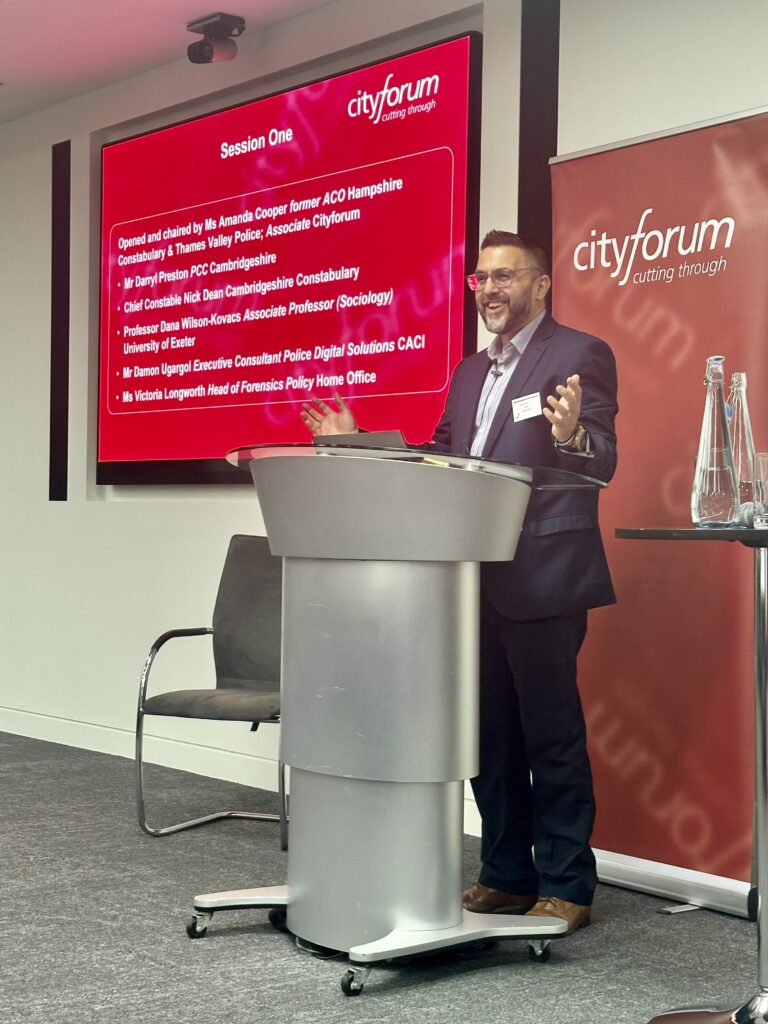How digital forensics can scale up its mission-critical role to improve modern policing

Today, almost all crime has an associated digital element.
With digital’s rapid expansion showing no signs of slowing, digital forensics – identifying, recovering, analysing, and investigating data stored electronically – is mission-critical to effective modern policing.
The (r)evolution of crime in a digital age
The 4th Industrial Revolution has blurred the lines between physical, digital, and biological spheres through technologies like AI, robotics and virtual reality, causing a seismic shift in the crime landscape. An example from earlier this year, involves Global engineering firm, Arup, who suffered a £20m loss due to a ‘deepfake’ scam using AI-generated digital clones of its Chief Financial Officer and other employees to ‘authorise’ the transfer of funds to the criminals.
While the crime was traditionally classified by Hong Kong police as ‘obtaining property by deception’, traditional forensic investigation methods such as fingerprint analysis or lifting fibres from the scene of the crime couldn’t be applied in this instance.
Often crimes like cyber-attacks, online fraud, terrorism and child exploitation, leave only a digital footprint or one that’s pivotal to solving the case. This explains why digital forensics (DF) is rapidly emerging as the cornerstone of an effective policing ecosystem.
The role digital forensics can play in modern policing
Digital forensics empowers policing professionals by enabling them to piece together narratives that shed light on the who, what, when, where, and how of criminal activities by:
- Uncovering hidden evidence: deleted conversations, sophisticated, encrypted financial transactions or incriminating images on the dark web can all be uncovered using DF methods and tools.
- Linking suspects and crimes: whether its tracing digital interactions across organised crime networks, social media posts placing suspects at the scene of a crime or private messages between accomplices in planning it, DF can be used to uncover evidence that builds a picture of events.
- Providing timelines and corroboration: DF can use metadata attached to images and audio files to establish a clear chronology of events and corroborate – or refute – witness testimonies and alibis.
Clearly, as the digital revolution has irrevocably changed crime, a robust digital forensics capability across policing benefits not only law enforcement, but society a whole.
So, what’s the current state of play?

The scale of the digital forensics challenge
The sheer volume of digital evidence is overwhelming.
Using the headline statistic from the National Police Chiefs’ Council that 90+% of all crime has a digital element , and basing it on the ONS’ 6.7m total crime case number for 2023. Assuming just one digital device per case, that’s 6m devices per year that require investigation: an average of 140,000 devices for each of England and Wales’ 43 territorial forces.
Even if just 10% of those crimes warrant police Digital Forensic Units (DFUs) investigation, that’s 14,000 devices each. We know that the current digital forensics backlog is huge, untenable and risks damaged public trust in policing effectiveness alongside impacting case prosecution times and as society’s digitisation continues, the challenge can only increase.
Three solutions to improve policing ecosystem digital forensics capability
Building DF capability in the policing ecosystem is now a strategic, operational and reputational imperative, going beyond the application of technology, also requiring investment in people and process.
Fostering Expertise
Forces have made great strides to address the challenge with more Digital Hubs, Kiosk and Digivans and Digital Media Investigators who can play a demand-reducing triage role around device seizure at crime scenes. But the current shortage of highly trained digital specialists working in line with Forensic Science Regulator Code of Practice statutory requirements is critical. As Europe’s only ISO/IEC 17043 accredited Digital Forensic proficiency testing provider, we can support forces in assuring digital forensics best practice in line with ISO/IEC 17025 accreditation standards. Add to this upskilling the robust resourcing and finance plans called for by Matt Parr in his HMICFRS report and you have a recipe for success.
Cutting-Edge Technology adoption
The rapid pace of technological advancement requires continuous adaption of forensic tools. DF must be capable of retrieving data securely, efficiently and lawfully wherever it resides, making Cloud forensics a vital focus area, along with Internet of Things (IOT) and blockchain capabilities. AI and machine-learning is now commonplace (unthinkable mere years ago), requiring specialist practice and – potentially – adoption in the DF process. Particularly in areas like image categorisation, though their accuracy and robustness need further validation. Partnering with organisations like CACI, DFUs can ease the burden of trying to keep pace with these advancements in technology.
Promoting Collaboration
Collaboration between police, government agencies, and private enterprises is vital for effective digital forensics at the scale it needs to be. Ironically, as criminals increasingly operate in sophisticated, structured networks with advanced technology and skills, policing is still working in silos. Sharing best practices, standards, and methods, and fostering information exchange can only strengthen the overall DF response.
Open Digital Forensics – a shared vision for the future?
A more collaborative DF policing ecosystem could go one step further, taking inspiration from the UK’s Open Banking initiative. Imagine digital forensics practitioners using standardised tools, methods, and processes, with data stored in a central national cloud repository, with AI and machine learning being used to rapidly triage the vast amounts of data, freeing up investigators to focus on relevant items. This centralised approach would also streamline the UKAS accreditation processes, reducing the burden on UKAS and individual forces.
Big thinking perhaps, but tackling the ever-growing, complex, evolving nature of crime in the digital age, requires even bigger ideas, investment and resource.
Digital forensics is a critical component of modern policing. By investing in expertise, technology, and collaboration, law enforcement can build a robust DF capability that not only meets current demands but’s also prepared for future challenges.
This article was based on a speech given by Damon Ugargol at the City Forum – 2024 Digital Forensics Summit.
To find out more about CACI’s Digital Forensics Laboratory including our uniquely accredited European Digital Proficiency Testing services, just get in touch with our team of experts today.